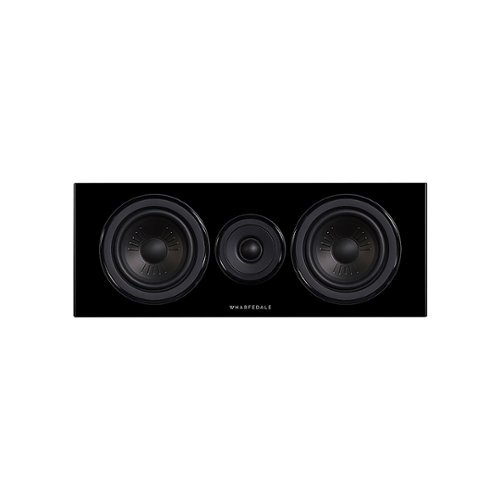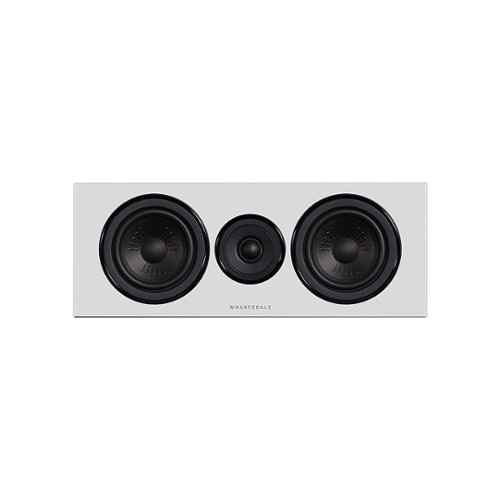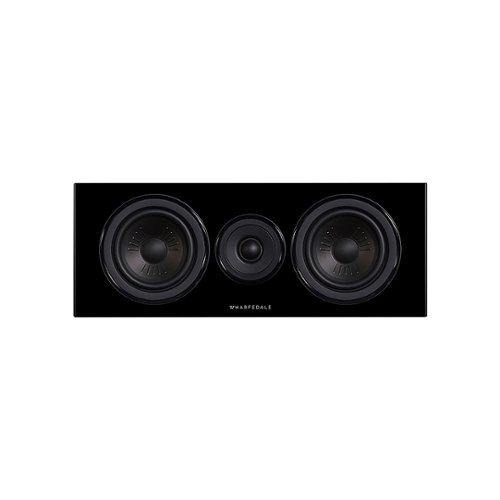WHARFEDALE DIAMOND 12.1 Review – Diamond Life
With heritage dating back almost 40 years, Diamonds are forever, says John Pickford. Read our WHARFEDALE DIAMOND 12.1 Review.
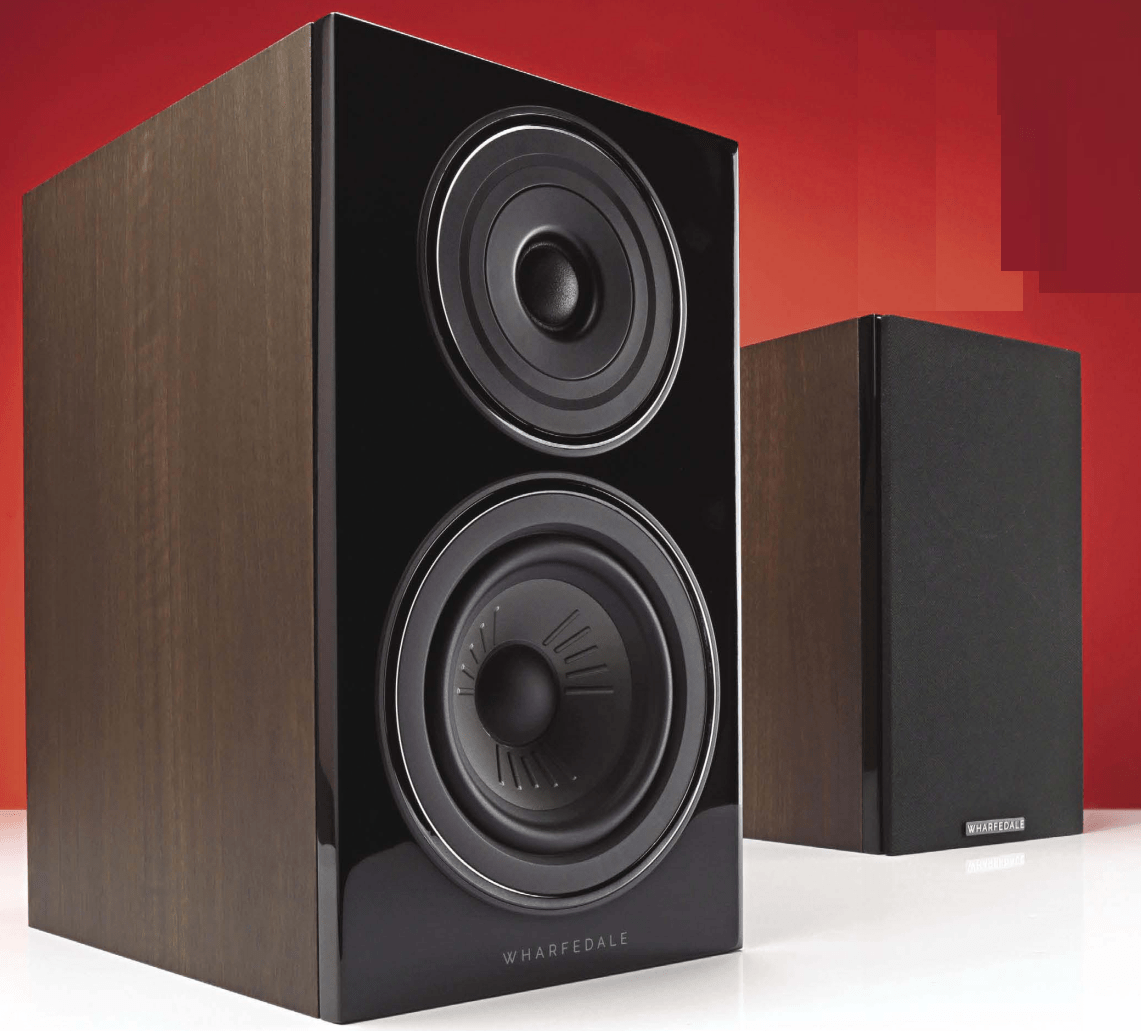
Heritage is something of a buzzword in audio these days. Wharfedale’s popular Linton Heritage, based on a mid-60s design and offering modern sound in a vintage-style cabinet is proof of that.
Although the new Diamond 12.1 makes no concessions to retro-chic fashion, today’s Diamonds can claim heritage dating back to 1982. Back then the Diamond was a dumpy little thing, almost as deep as it was tall, reminding me, with its squat profile, of topcropped hotrods.
Nowadays the Diamond is a brand in its own right, comprising a series of bookshelf and floorstanding loudspeakers intended for both stereo and home theatre use. Owing nothing to the original model beyond its status as the grand-daddy of quality compact affordable loudspeakers, the new Diamond 12 Series has been designed from the ground up by the highly respected Karl-Heinz Fink, one of the most successful loudspeaker designers on the planet according to Wharfedale.
Sizewise, the 12.1 is in the middle of the three bookshelf models in the range, all of which share the same 25mm (1 in) textile dome tweeter. The present model features a 130mm (5in) woofer with a cone made from the company’s proprietary Klarity material – a polypropylene/mica mix – with a low-damping rubber surround. Raised ‘ribs’ on the cone are added to aid stiffness but also add to the speaker’s visual appeal.
It’s an elegant design – and though styling is always a matter of personal preference, the Diamond 12.1 is a traditional design for modern-day living without sporting an obviously vintage vibe.
Our review sample came with a lovely walnut finish and glossy black front baffle, to which a cloth grille can be magnetically attached. You may wish to leave the grilles in place for aesthetic reasons however, like most detachable grilles, they do nothing for sonic performance and are best left off for serious listening.
At the rear is a conventional bass-reflex port, which plays a large role in the low-end response though not so much as to preclude close-to-wall positioning. I tested the pair on heavy Target stands with the rear baffle just 6 inches from a rear wall, though a later mono test of a single speaker in free space – 4 feet from the nearest wall – revealed the Diamond’s bass response is not overly reliant on boundary reinforcement.
Talking of reinforcement, the cabinet employs what Wharfedale describes as ‘Intelligent Spot Bracing’ to reduce cabinet resonance. This is done successfully as the Diamond 12.1 is remarkably free from audible boxy colourations; performing the knuckle-wrap test confirmed the resonance-free rigidity of the cabinet.

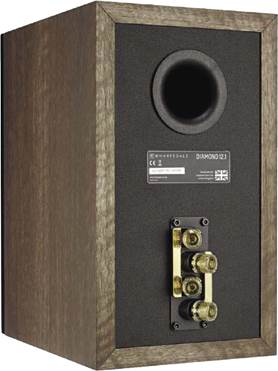
Returning to the rear panel, two sets of speaker terminals, set at jaunty angles to each other, allow for bi-wiring if you wish. I haven’t gone down the bi-wire route for many years so a single run of QED XT40i cable did the job nicely. This connected the Diamonds to my Naim Nait XS 3 amplifier, which might seem like overkill partnering £ loudspeakers with an amp retailing at over £, however the results clearly showed that fed good quality power, these budget boxes punch well above their weight.
And pack a punch they do, as I discovered spinning my original vinyl copy of Nirvana’s classic Nevermind, which celebrates its 30th anniversary this year – how old has that just made you feel? For all its aggression, Smells Like Teen Spirit can sound thin and gritty through brightly balanced speakers, even those costing way more than the Diamonds. Here though, the 12.1’s smooth treble,
punchy midrange and rounded bass presented the track with the sort of slam, drive and weight that would leave my BBC LS3/5a monitors limp. You want to hear a rock recording like this loud and the Diamonds’ smooth tonal balance almost begs you to turn up, rock out and don’t spare the neighbours.
But these aren’t mere rockboxes, as I discovered spinning Sand and Foam from Donovan’s 1967 Mellow Yellow LP. This close mic’d, dry acoustic recording needs to be reproduced accurately for full effect and here the Diamonds’ articulate nature projected the lead vocal with clarity and nuance, while the acoustic guitar’s leading edges and body were presented in perfect proportion.
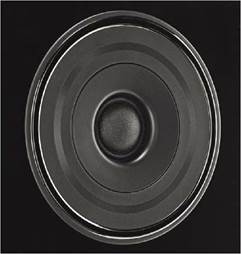
“They have a lively, engaging sound that is punchy – yet free flowing and easy to listen to”
A play through The Mike Westbrook Concert Band’s Celebration (Deram 1967), a large- scale work beautifully produced by Eddie Kramer (who recorded many rock giants including Hendrix and the Stones; he even engineered a couple of Beatles tracks), didn’t upset the Diamonds at all. Stereo imaging was honest enough without being epically panoramic, and while the speakers’ slightly midforward character doesn’t make for the deepest of soundstaging, their realistic portrayal of each instrument’s timbre was excellent. I’ve heard this recording sound altogether more cluttered through much larger and more expensive loudspeakers.
Listening to some midrangedominant mono 45s from the same era (Hendrix, Stones and Beatles again) revealed the Diamonds’ forgiving nature, for while they don’t offer a particularly immersive ‘listen in’ experience, they project well without becoming overly strident or harsh. With generous and warm low-mid and upper bass output, they rounded out the overall sound usefully, preventing the wince-inducing aggressive artefacts more ruthlessly revealing transducers – studio monitors for example – will not tame.
Wharfedales latest Diamond design is completely successful, so my ears tell me. Friendly yet fun, they won’t render any of your favourite tracks unlistenable by highlighting too many flaws in the recording. They have a lively, engaging sound that is punchy yet free flowing and easy to listen to, regardless of what type of music is played.
Happy-go-lucky in nature, they are quite unfussy about where they are placed, however they deserve good quality partnering equipment and will not be outclassed by sources and amplifiers costing far more than their asking price; they have the potential to survive system upgrades.
I was extremely impressed by the quality of sound the Diamonds deliver for the money; I would have guessed their price to be at least 50% more than it is. As it is, Wharfedale’s brand new Diamond 12.1 is a must-hear loudspeaker for anyone looking for a classy two-way bookshelf design that doesn’t break the bank.
NOEL SAYS –
I know designer Karl Heinz-Fink well and the new Diamonds reflect his design outlook. In a quick listen I found them admirably smooth and easy, the polypropylene/mica cones revealing instrument timbre superbly; no zingy metal imposition here. Nor screechy treble, because the tweeter is not metallic either. A class act at a low price.
Frequency response of Wharfedale’s Diamond 12.1 is impressively flat and smooth, our analysis shows, making this a fundamentally accurate loudspeaker – unusual nowadays where budget ‘speakers in particular come with treble lift.
The tweeter is interestingly peak free and it crosses over relatively low – at 1.5kHz the impedance curve shows. This gives a crossover wavelength double that of the usual 3kHz, making phase matching easier – and indeed the Diamond maintained its response well at differing microphone heights on the forward axis. This keeps the sound consistent with head movement and helps toward coherent imaging. In all, an excellent high frequency response.
The small bass/midrange unit works from 1.5kHz down to 50Hz before rolling down slowly, the port (red trace) adding to output around 55Hz. There’s a small amount of lift toward low frequencies to give the sound a sense of body.
Sensitivity was good for a small cabinet, measuring 85dB sound pressure level (loud-ish) from one Watt of input at 1metre distance, making a 60 Watt+ amplifier best suited.
Impedance measured 6 Ohms using pink noise, d.c.r. being 4 Ohms (4 Ohm bass unit). Our impedance trace shows a classic two-way with port dip at 55Hz and crossover peak at 1.5kHz.
The Diamond 12.1 measured well, with obvious emphasis placed on maintaining treble quality and tonal accuracy. NK

| OUTSTANDING | amongst the best |
| VALUE | keenly priced |
| Distributor | Wharfedale |
| Tel | +44 (0)1480 447700 |
| Website | www.wharfedale.co.uk |
When you purchase through links on our site, I may earn an affiliate commission. Here’s how it works.

